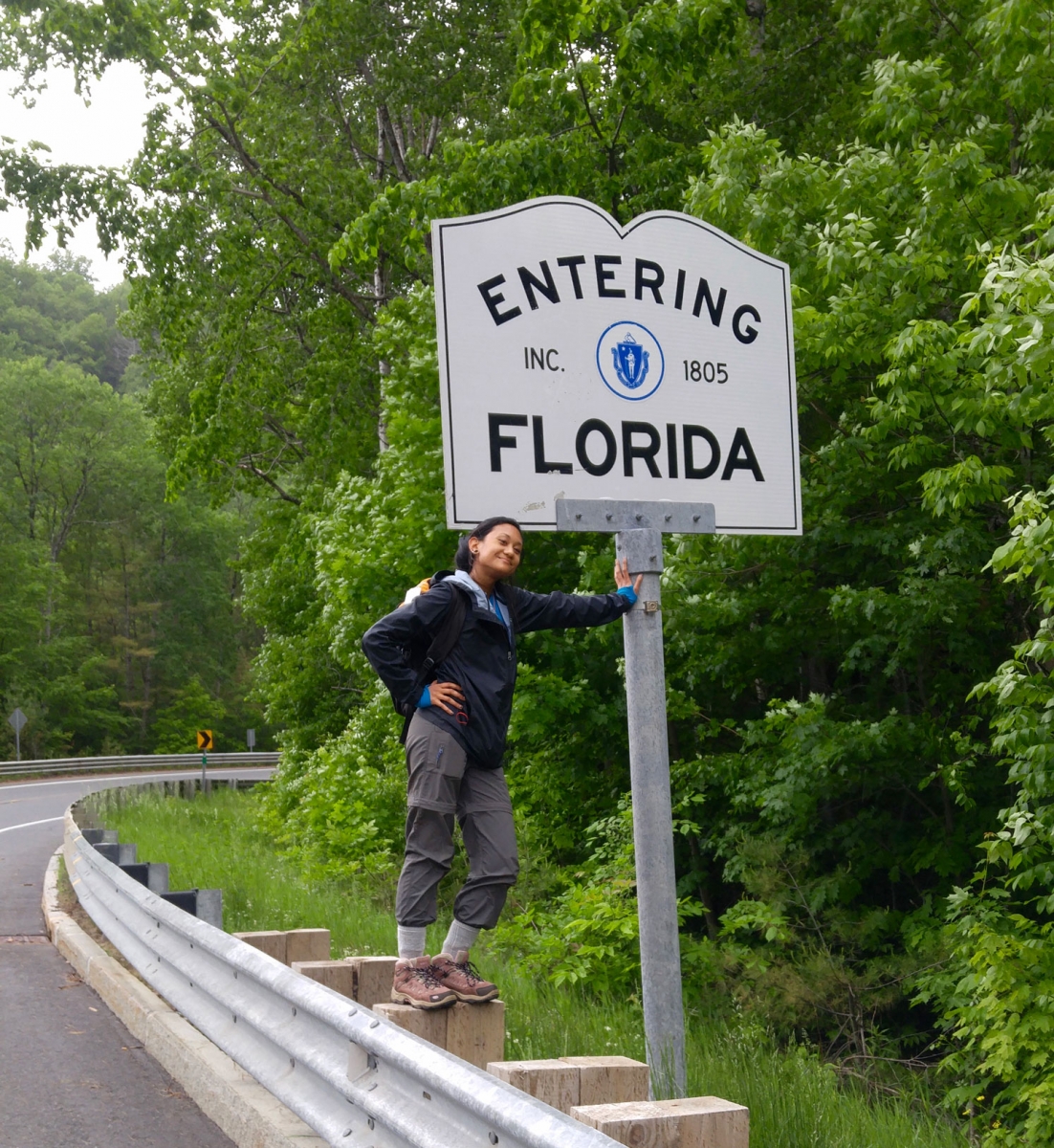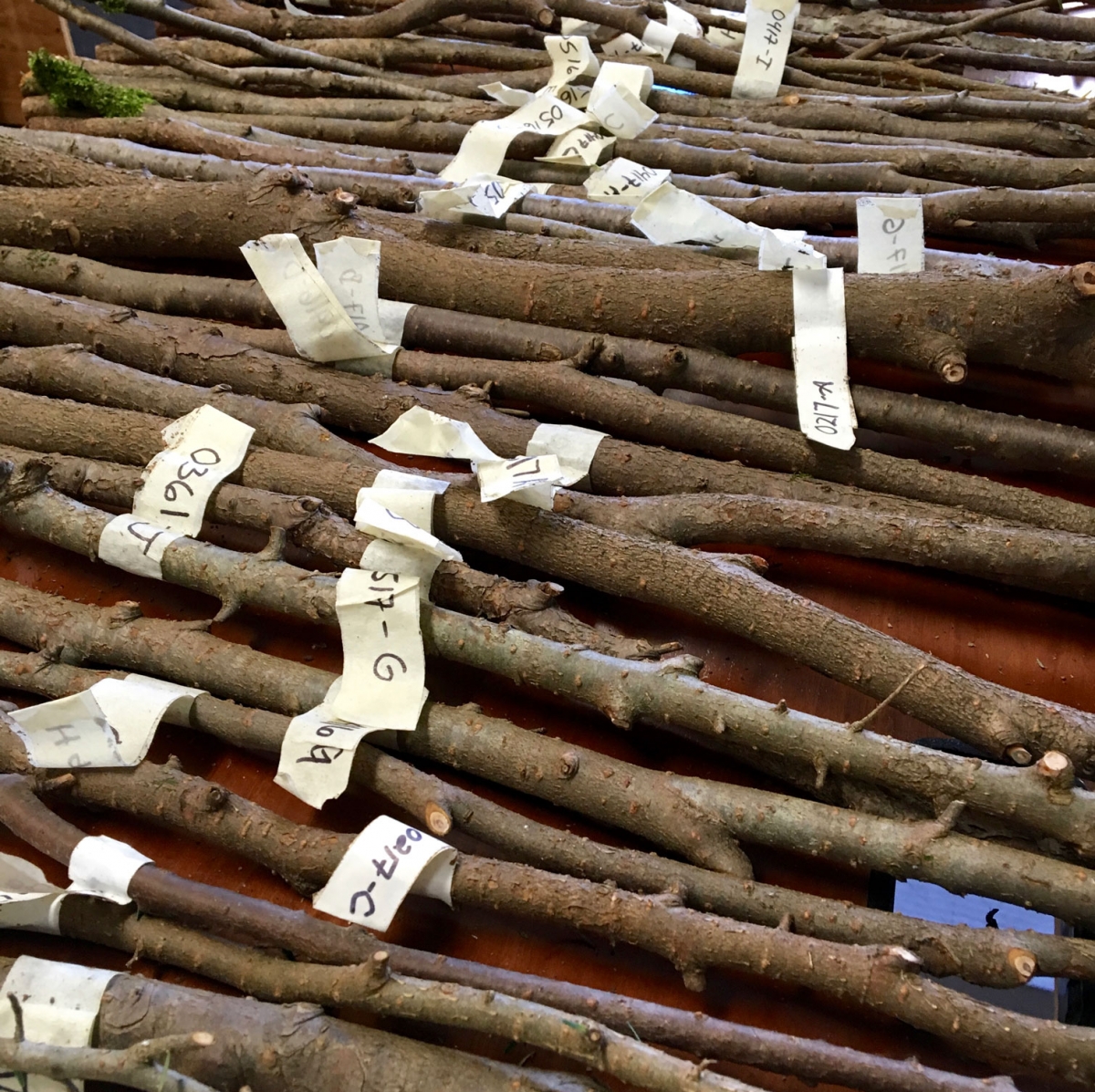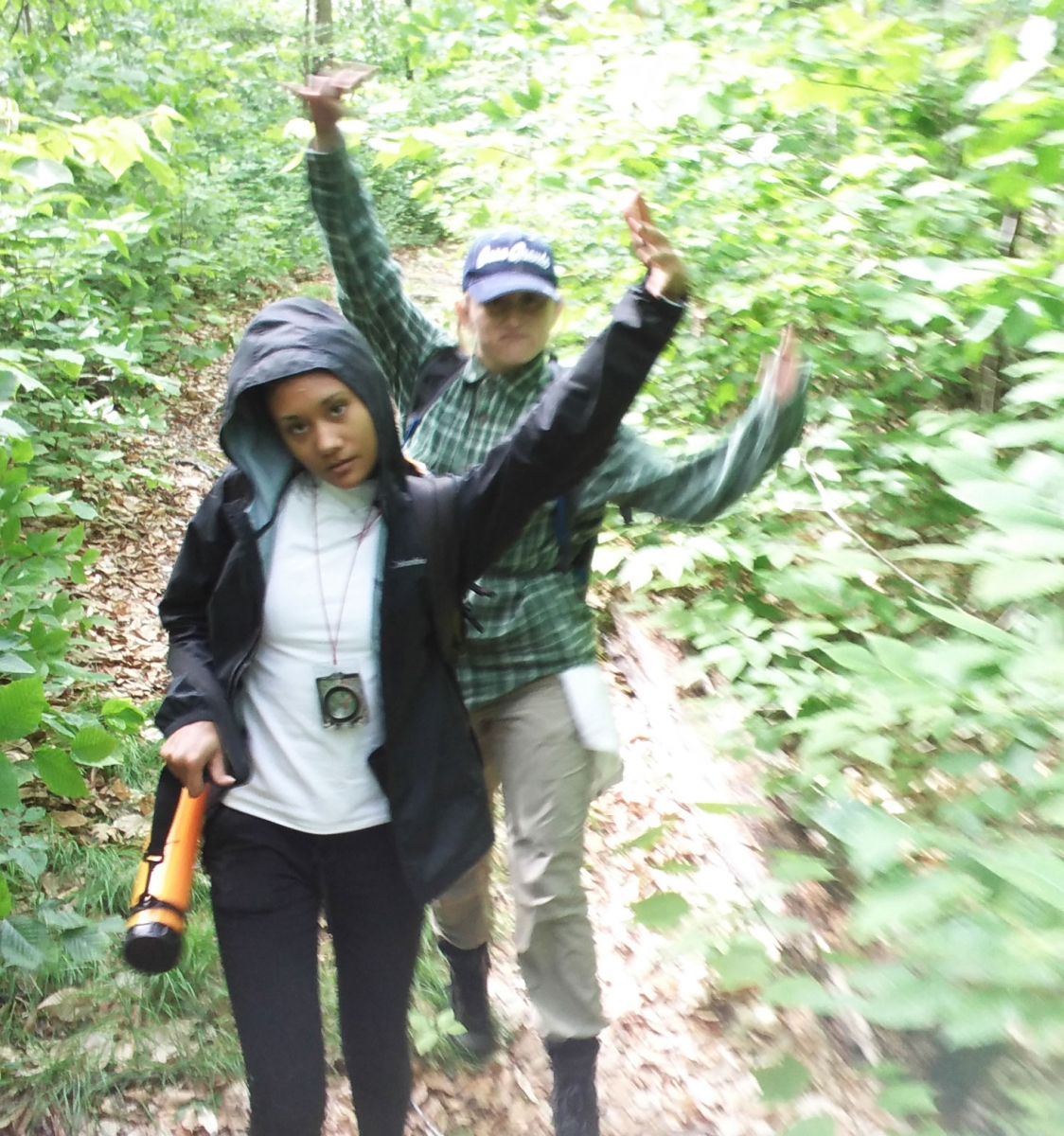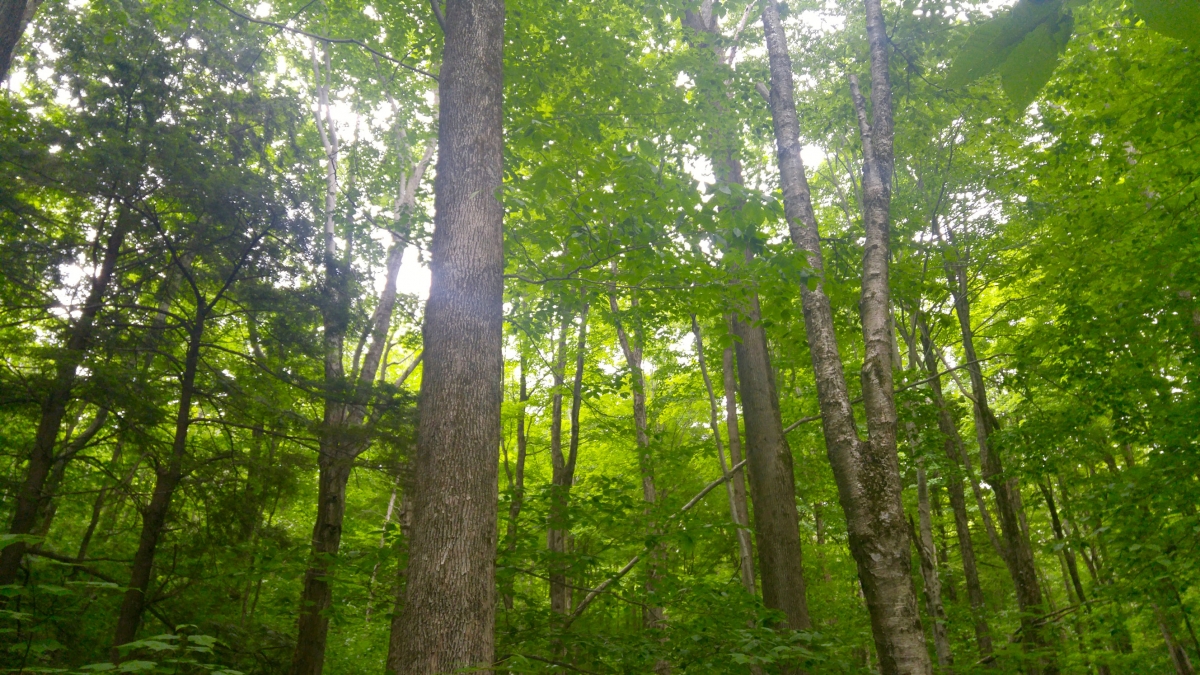You are here
From the Ground Up: What’s Going On With Young Hemlocks?
The first thing I would have anyone know about me is that I’m in love with the color green—the green of leaves and grasses and the edge of the sunset. It’s a color with a thousand shades and tints, a color that dances with light and seems strangely alien in any setting but the natural one. Luckily, there’s a lot of green in the woods, so for me a summer at the Harvard Forest falls somewhere on the spectrum between ‘this is just too cool to be real’ and ‘I get to spend the whole day outside?!?’ Fortunately, it is real, and I do get to spend about half my days out among the trees, investigating the habits of eastern hemlock trees and its possible impacts on the surrounding forest.
 A typical day on the hemlock project can involve one of two things: lab or field. On a field day, I don my light-colored field pants (10/10 would recommend for sheer comfort), grab a flannel and a backpack, and head out into the woods. The primary field site is located here at the Forest, on Prospect Hill, although we have, as a lab group, ventured to such exotic locations as Florida, MA and Pisgah, NH to sample mature trees. My project is particularly interested in the hemlock seedlings that sit beneath a canopy of adult hemlocks like a rather thick, poky blanket. The existence of this understory, as its called, is unusual; mature hemlocks are usually so efficient at blocking out sunlight that little to no understory persists. I am hoping to confirm that this undergrowth is actually a seedling bank, which is more or less a definition of behavior requiring that a tree species possess the ability to remain alive at seedling size with very little light for up to several decades. Doing so will further expand our understanding of hemlock trees. To date, we have collected over 100 seedlings, as well as cores from 45 overstory trees, and whisked them all away for analysis.
A typical day on the hemlock project can involve one of two things: lab or field. On a field day, I don my light-colored field pants (10/10 would recommend for sheer comfort), grab a flannel and a backpack, and head out into the woods. The primary field site is located here at the Forest, on Prospect Hill, although we have, as a lab group, ventured to such exotic locations as Florida, MA and Pisgah, NH to sample mature trees. My project is particularly interested in the hemlock seedlings that sit beneath a canopy of adult hemlocks like a rather thick, poky blanket. The existence of this understory, as its called, is unusual; mature hemlocks are usually so efficient at blocking out sunlight that little to no understory persists. I am hoping to confirm that this undergrowth is actually a seedling bank, which is more or less a definition of behavior requiring that a tree species possess the ability to remain alive at seedling size with very little light for up to several decades. Doing so will further expand our understanding of hemlock trees. To date, we have collected over 100 seedlings, as well as cores from 45 overstory trees, and whisked them all away for analysis.
 Enter the other type of day: lab. In order to confirm that hemlock can maintain a bank, the age of the seedlings and their history has to be determined. This is done by counting tree rings. Back in the lab, using a microscope and a couple of computer programs, I can determine the age of a seedling and its pattern of growth—whether there was an event (like a drought or a pest infestation) that prevented the tree from putting on a wide ring, or whether there was particularly good decade for growth throughout which the rings are thick and evenly spaced. By comparing the patterns of an individual sample to the others, I’ll create a chronology, or a master growth history of how hemlock trees have been growing in the Prospect Hill area.
Enter the other type of day: lab. In order to confirm that hemlock can maintain a bank, the age of the seedlings and their history has to be determined. This is done by counting tree rings. Back in the lab, using a microscope and a couple of computer programs, I can determine the age of a seedling and its pattern of growth—whether there was an event (like a drought or a pest infestation) that prevented the tree from putting on a wide ring, or whether there was particularly good decade for growth throughout which the rings are thick and evenly spaced. By comparing the patterns of an individual sample to the others, I’ll create a chronology, or a master growth history of how hemlock trees have been growing in the Prospect Hill area.  This will allow me to establish whether the seedlings have been suppressed, or prevented from growing past seedling size due to lack of light or nutrients. If they have been suppressed at a short height for many decades, we can conclude that a seedling bank exists, information that will better inform future hemlock researchers.
This will allow me to establish whether the seedlings have been suppressed, or prevented from growing past seedling size due to lack of light or nutrients. If they have been suppressed at a short height for many decades, we can conclude that a seedling bank exists, information that will better inform future hemlock researchers.
Relatively, we know so little about the workings of forests, a rather astonishing fact considering their vital role in maintaining the balance of our only habitable planet. It’s a level of familiarity on par with the average person’s knowledge of computers. Most people know where the on/off button is, how to access the internet, and how to use a Word doc or a social media app—standard stuff. When the computer crashes however, not many have the comprehensive knowledge of its inner workings to understand why it went haywire, or how to set it right. Mostly, if you’re like me, you stare at a black screen and wonder mournfully where it all went so terribly wrong.
For those trying to puzzle through the remarkable complexity of even just one ecosystem, an understanding of the whole often comes as a summary of the individual parts. Research projects like mine attempt to lay a piece of the foundation for that understanding by determining the history and role of individual species within the forest. At the end of the metaphorical day, these pieces together lead to larger conclusions about how the forest actually behaves—which, to return to the computer simile, means that I might no longer have to wonder if banging my computer against the table a few times will bring it back to the world of the living.
 So for now, I’m soaking up the green, processing seedlings for analysis, and learning as much as I can from my lab-mates and fellow interns. It’s a happy life here, between the scenic running routes, well-planned and fairly well-executed weekend trips, impossibly good food, and wonderfully kind, inquisitive people. It’s an incredible place to be hard at work.
So for now, I’m soaking up the green, processing seedlings for analysis, and learning as much as I can from my lab-mates and fellow interns. It’s a happy life here, between the scenic running routes, well-planned and fairly well-executed weekend trips, impossibly good food, and wonderfully kind, inquisitive people. It’s an incredible place to be hard at work.
But of course we leave some time to be ridiculous, too.




